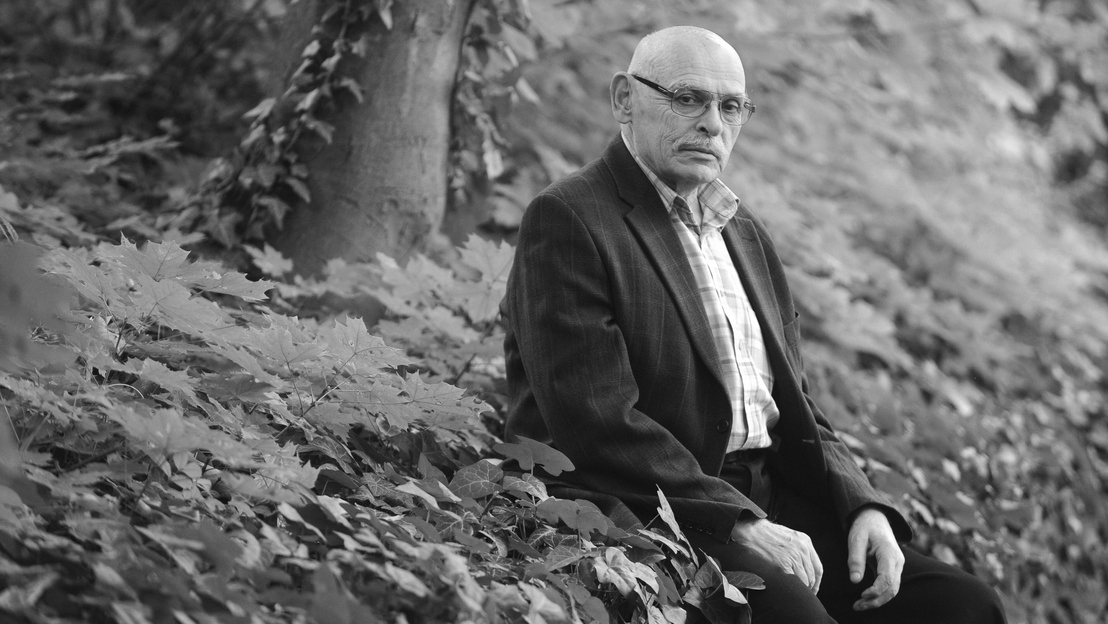The Hungarian writer from Transylvania, awarded the title of Artist of the Nation and winner of the Attila Kossuth and József prizes, was 85 years old.
His first short story was published in Utunk, and in 1975 his first highly successful novel, Kő hull apadó kútba, was published. In 1990, the myth-creating monumental novel Agancsbozó was published, but it was Szilágyi's first work of the new millennium, 2001's Hollóidá, that created a great resonance similar to that of the 70s.
We were shocked to learn that Kossuth Prize-winning writer István Szilágyi, the founding editor-in-chief of Helikon, died in Cluj-Napoca on March 13, 2024, at the age of 86.
Helikon Publishing reported.
István Szilágyi was born in Cluj-Napoca on October 10, 1938, and lived and worked there until his death. His father was a master tanner, his mother worked as a maid, a garment worker, and then as a salesperson in a perfume shop. The family moved to Zila in Szilágyság in 1940, and István Szilágyi began his schooling there. In 1952, he returned to Cluj-Napoca, where he attended a high school for railway mechanics. He was driven not only to ease the burden on his family, but also to
to become a train driver after completing vocational school.
However, when he was in his third year, the railway machinery industry was unexpectedly terminated, and he then worked in railway workshops in Nagyvárad and Szatmár. However, his dream - to become a train driver - did not come true, because he was classified as unfit at the medical examination due to his poor eyesight. The young man looking for a profession experienced this as a stroke of fate. After graduating, he "for lack of a better word" enrolled in the law faculty of Babes-Bolyai University.
Literature instead of a legal career
His first article was published in the journal Utunk when he was a university student. After obtaining his diploma, in 1963, he was offered a position as a prosecutor, but he did not accept it, nor did he later take on a position that required his legal education. Instead of a career in law, he committed himself to literature: he worked as a journalist at Utunk, which published his first sketch (Te kis sorskovács). After that, he was offered a job in the report section and an additional opportunity to write works of fiction.
Although the newspaper changed its name after the system change in 1989 - from Utunk to Helikon -, he only changed his position over the years: first from an internal employee, in 1968 he became deputy editor-in-chief, and then he became the editor-in-chief of the newly named biweekly paper.
From the 1960s, he became one of the defining personalities of the Forrás generation, and was able to quickly show his talent as a fiction writer. In 1964, his first volumes of short stories (Sorskovács, On this star) were published in the Forrás series, in which he depicted manual laborers in authentic situations, breaking away from the schematic depiction of workers of the time.
Novel writing and the taste of success
In 1969, he appeared with a novel: Az Üllő, dobszó, harang contrasts the poetic love story of a teacher and a deserter with the inhumanity of the Second World War. His second novel was published in 1975:
Kő hull apadó kútba is one of his most popular and widely read works, which is simultaneously a historical novel, a sociological and a psychological thriller.
In the work, which has been translated into German, Romanian, Slovak, Polish and Russian, its analysts believe that they discover a worthy continuation of the sound of the Golden Ballads.
In this period, István Szilágyi got to know the taste of success: he received his first official recognition, the literary prize of the Romanian KISZ, in 1972, followed three years later by two at the same time: the prize of the Romanian Writers' Association, and a private one, the Pezsgő prize of the critics invited by Utunk .
In Romania, immediately after the fall of the Ceausescu dictatorship, in the summer of 1990, his monumental, almost 700-page novel, Agancsbozo, with its myth-making power, was published. This work
he wrote it already in the 80s, but at that time there was no hope of its publication due to censorship.
What makes the book exciting and special is that it can be interpreted as a parable, a counter-utopia and a fantastic-mythological novel from a genre point of view. In 1990, he won the novel award of the Romanian Writers' Association with this work - and the Attila József award received in the same year rewarded his entire life's work. It was then that he was admitted to the Hungarian Writers' Association.
His next huge, well-received work was published in 2001. The Raven Age was divided into three parts in the 16th century. a historical novel set in 19th century Hungary, a merciless and tragic story "exploring the secrets of imagination, existence and human life". It is about the vivid everyday life, loves, war adventures and other horrors of a distant era.
Award winner
In 2020, he appeared again with a novel, the XVIII. The work "Messze túl a horizontáron", set in the 19th century, is interpreted by critics as a synthesis of his life's work. In addition to his great epic works, he wrote short stories and essays, and for his seventieth birthday, he published a collection of his short prose under the title Bolygó tüzek.
The reader can enjoy the uniquely unique voice of István Szilágyi, who was elected a full member of the Hungarian Academy of Arts in 2011, in the volumes Katlanváros, Messze túl a náhízár and A hóhér özönei published by MMA Kiadó. In 2010, he was also elected a member of the Digital Academy.
He received the Kossuth Prize in 2001 for his outstanding work as a writer, for his work enriching the genre of prose with the archaic layers of the Hungarian language, for his exceptionally sensitive works depicting historical processes and examining the general laws of human existence. In addition, he received the Sándor Márai Award in 2003, the János Arany Award in 2008, and the Alföld Award in 2009. In 2011, he was awarded the Lifetime Achievement Award of the Transylvanian Hungarian Literature Foundation. In 2014, he became the Artist of the Nation, and in 2017 he was awarded the Prima prize. In 2020, the Romanian Hungarian Democratic Union awarded him a lifetime achievement award for Transylvania.
A portrait film was also made about István Szilágyi in 2014. In its preview, we get a taste of his creative approach and artistic direction.












